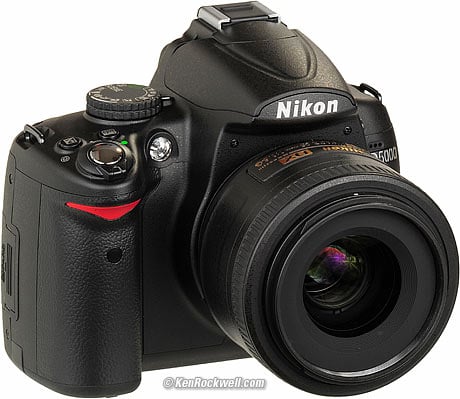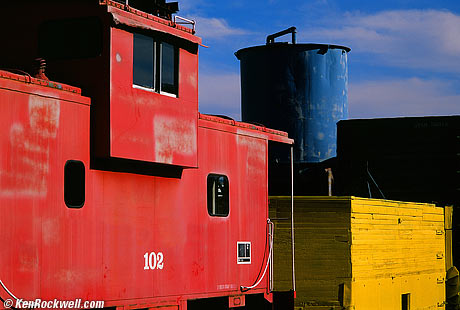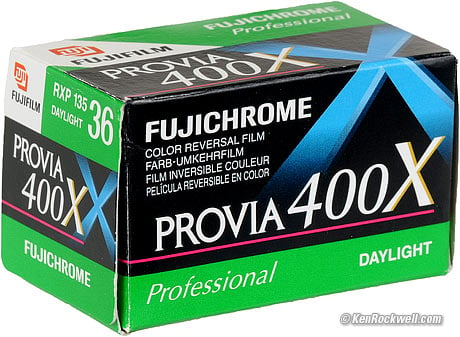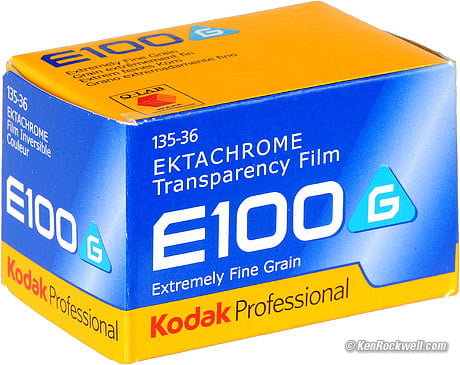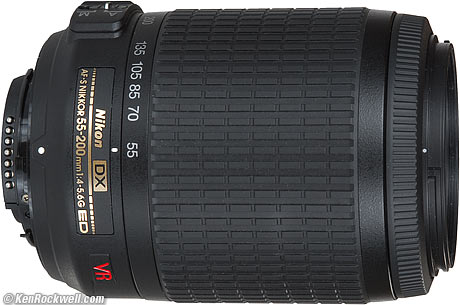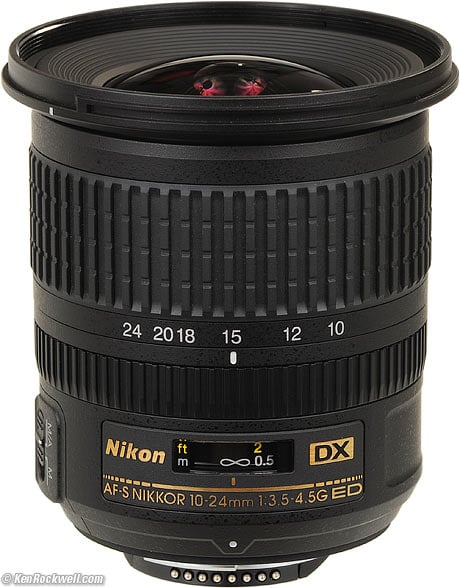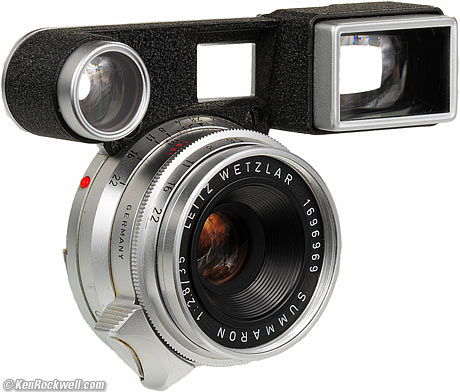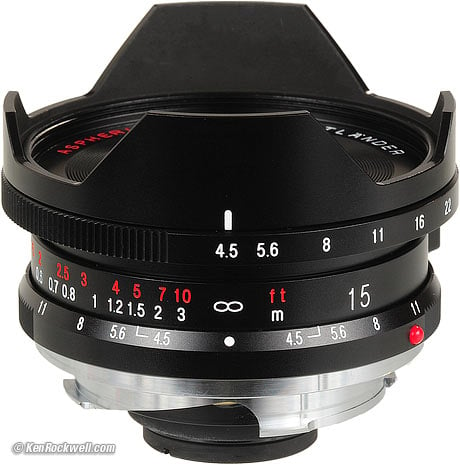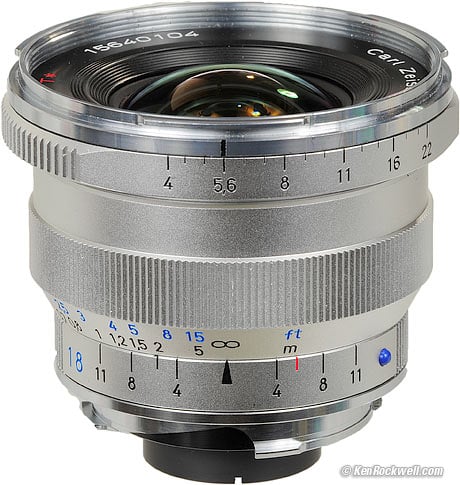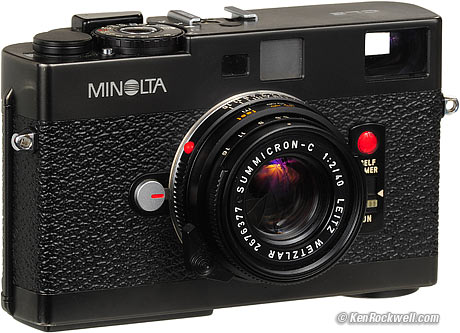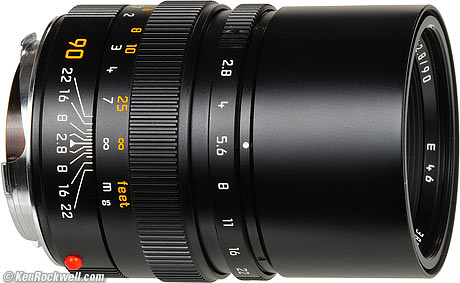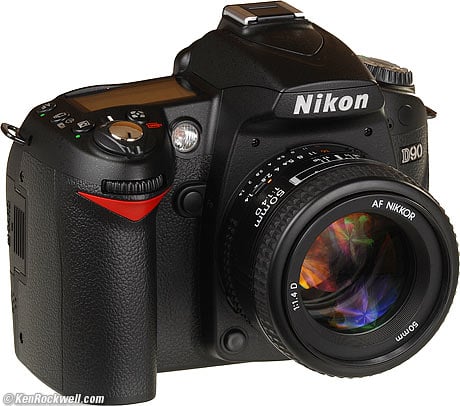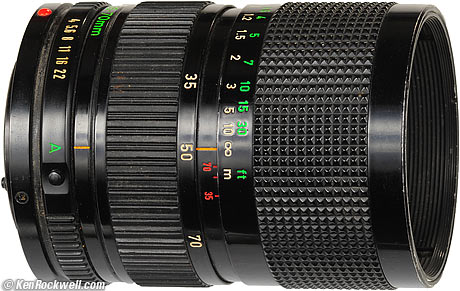Home Donate Search Gallery How-To Books Links Workshops About Contact
May 2009's
Updates RSS
all © 2009 KenRockwell.com. All rights
reserved.
|
I personally buy from Adorama, Amazon, Ritz, B&H, Calumet and J&R. I can't vouch for ads below.
|
29 May 2009, Friday
NEW: The Glass Keyboard. A look at tomorrow, today.
NEW: Things that Bug Me: How to Spot an Amateur. Pet peeves out of which I've grown.
28 May 2009, Thursday
Suck Your Mac!
Both my 5-1/2 year old 800 MHz Apple 12" iBook and 3-1/2 year old Apple Quad 2.5GHz G5 run perfectly. I have no reason to want to replace them — except that the fans in my desktop Quad G5 have sounded more like a helicopter on takeoff for the past six months!
The Quad G5 is such a potent computer that it has four fans inside, and when it has to work hard, they spin up like jet engines.
I was going deaf working all day and night on this website, and was shopping for a new machine thinking that either I was getting more sensitive to the noise, or thinking the wrong thing (as windows users are cursed) that maybe the additional computational loads of today versus 4 years ago were making my computer work harder.
Baloney.
All my Macs have always worked better and faster as time goes on, because Apple keeps updating the operating systems — usually for free and automatically — so my Macs today run faster and smarter than they did when new. That's the way Apples work.
I rationalized my fan problem, patting myself on my back for working so hard (the fans run faster the harder the computer has to work).
Even though I had worried about this, I'd never seen dust be an issue, but I also know that since the fans are thermostatically controlled, that if airflow was restricted that the fans would run faster to try to overcome the blockage.
I finally got up the incentive to pop open my Mac (it pops open instantly and elegantly; I just didn't want to bother to stop working or to shut it down, since I never do), and lo and behold, the liquid cooling condenser was covered with a matte of dust. 14 hours of work a day for three-and-a-half years had sucked enough dusty air to clog it completely.
One quick suck with the same Shop-Vac I use to suck dust from my DSLR sensors, and voila!, my Mac is now perfectly quiet again.
Be careful not to bend any of the aluminum fins while you're sucking. These Macs have radiators just like modern Porsches.
If your liquid-cooled G5 or other Mac is making more fan noise than it used to, turn it off for safety and give it a look. The side pops right off, and the fans pull out without any tools. The industrial design is so elegant that you ought to have a look just for the sheer pleasure of it: Macs are beautiful on the inside, too.
Nikon D5000
The Nikon D5000 is great. It's not as great as the D90 or as light and inexpensive as the D40, but it's great in its own niches.
Its color rendition is as good as all the other Nikons, and its metering is far better than the D80 and D40 meters. Here's a snapshot; notice the fantastic skin tones and perfect exposure made without even trying under overcast light:
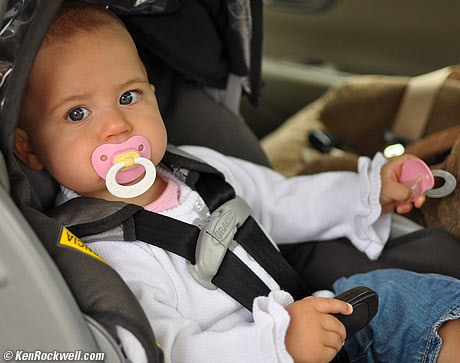
Katie's first birthday. (Nikon D5000, Nikon 35mm f/1.8, Program mode chose f/1.8, Auto ISO chose f/1.8 at ISO 250, Auto A3 WB, Neutral Picture Control with +1 saturation.) bigger.
The Great DX Finder Fiasco
Writing my secret and yet-unpublished comparison tables in my upcoming new Nikon D5000 review, I calculated the real finder magnifications of various DX cameras.
The magnification of a DX finder varies with model anywhere from 0.44x to 0.53x, NOT the 0.94x claimed for many Nikon cameras.
What? Simple: Nikon attempts to deceive and specifies them with a 50mm lens. A 50mm lens is a telephoto on DX!
When measured with a 28mm lens, which is normal (the diagonal of the sensor), DX finder specs look as dismally tiny as they really are.
Coverage percentages remain unchanged, but remember: DX covers less than half the area of FX, thus with the same coverage percentage, the finder of a DX camera is much smaller than an FX camera.
If you haven't looked through an FX or film finder lately, you're in for a treat. That's half the reason I love shooting film over DX cameras: I can see through my finder!
27 May 2009, Wednesday
Nikon D5000 with 35mm f/1.8 "Cartier-Bresson."
NEW: Nikon D40, D5000, D300 and D3 high ISO comparison. The D5000 wins the DX klasse.
Nikon 13mm for sale
Tom Leighton (212 370-1835) has a Nikon 13mm for sale.
No, I don't know Tom from Adam, but considering how few of these lenses are out there, I thought you might like to know. Tom says he's the original owner and I think he's even got the box.
26 May 2009, Tuesday
Pssst: New Photo Tour
Don't tell anyone because these fill up almost instantly, but Dave Wyman just announced a new photo tour to California's Steinbeck Country.
I'll be there, too, whoo hoo!
I'll be helping as well as shooting; I'll be available to help you with any and all aspects of your photography. What I cover much better in person than here on this site is what really matters in photography, which is how to see a great picture when you're out and about, as opposed to equipment reviews.
Dave's tour runs Friday through Sunday, June 12-14. See you there!
NEW: The Cult of the Leica. This may be a sucky article, let me know. It didn't turn out as funny as I had hoped. It may have been a complete waste of time.
Nikon D5000
My D5000 just arrived, so I'm cooking up my review.
Good news: ignoring price, it seems like a great update of the D40, taking the same battery.
Flash sync is slower, but everything else updates to Gen 2 quality if you make huge prints. Even so, I'm still blown away by the quality I get out of my D40 photographing my kids from day-to-day.
As always, the D5000 is newer, and therefore ergonomically smarter than any Nikon, or any other camera, to date. The D5000 even rotates its INFO screen when you hold the camera vertically! Even the Canon 5D Mk II or D3X can't do that.
The D5000 wakes up out of the box set well to make great photos. One of my peeves is that unless you spend an hour with it, most other cameras don't wake up in the modes you want. In the D5000, the AF is all set properly, ADR is set to AUTO, and times are good, You do need to set AUTO ISO ON.
Not to worry, after the review gets written, the user guide starts.
Some fine day, all cameras wil be designed well enough that no one needs user guides. Apple computers and iPods need no printed manuals, and are far more complex than a camera. Cameras still aren't as smart as iPods, yet.
25 May 2009, Memorial Day
It's sad we need a holiday to honor the fallen. They deserve a load more than one day a year.
I don't know about you, but I get up every day and give thanks for all the valiant men and women who've given not just their lives, but anything to be out there fighting for freedom so that I can be sitting here on my butt in Sunny California writing about photography in English, instead of writing about Nikon in Japanese or Leica in German.
That's what would have happened in the 1940s if it wasn't for America's bravest. If these people didn't serve, there would be no USA and that would mean no Adobe Photoshop software, no personal computers, no iPhones, no Tiffen filters, no Amazon and not even the Internet at all, which was started as a DARPA military project in 1969 to build America a data network that would work even if most of it got blown away in case of nuclear attack. Even though the internet has been around in various forms since 1969, the only way common people got on it was when the first consumer internet browser, Mosaic, was invented in 1993, also in the USA.
My thanks doesn't stop at the fallen: I give thanks for each and every one of you who's been out there, and who are out there today reading this right now, who sacrifice yourselves and put yourself in danger so that the entire world can enjoy freedom.
Thank you!
22 May 2009, Friday
Volcano Country, California.
NEW: Volcano Country Photos. These are my snaps from last month's trip through Northeastern California.
Windows is so bad
American businesses lose billions of dollars a year to lost productivity from using windows computers for business, instead of computers that work, like Apple.
The only reason I mention this again is because I had to stop what I was doing (formatting my recent Northern California photos to share) and help my wife get her P.O.S. windows computer, provided to her by her multi-billion-dollar employer, to print something. Whatever crappy Microsoft software she was running stopped, and we both wasted another half an hour doing what Apple always just does.
Using Windows is like living in a Communist country. It wears you down and tries to make you think that you owe it your allegiance. Weak people say "I can't beat the Communist government" or "all the people in my industry use windows, so I have to, too," and we all lose.
Our duty as Americans is to keep the world free, and stop Communism anyplace it might sprout. America doesn't sit around idly and let bad things happen. America gets out and brings freedom to people all over the world, whether they live in Iraq, Afghanistan, or anyplace there are problems. So why do Americans settle for the daily hassles that trying to use windows brings?
You can do your part by using Apple, which just works. All your software runs on it, and if not, you can run Windows on Apple computers anyway, and so what: Apples open all your windows files and sends them just fine.
I remember back when I had a job and my employer's crappy $4,000 windows laptop was in for one of its usual repairs for the week. I continued to work unimpeded on my personal Mac.
When I met my boss and handed him all the paperwork he wasn't expecting to get, he said "I thought your computer was in the shop?" "Yes," I said, "so I did this all on my Mac." He had no idea that all our secret and proprietary hoop-de-do files worked even better on my Mac than the windows crap Tektronix used, like most computationally more foolish US businesses.
Last week a colleague asked if I knew how to fix his virus-dead computer. I responded "Buy a Mac." I was right: he was on a windows computer, which are designed to get viruses so that you have to replace them every couple of years.
Me? My laptop is over 5 years old and runs perfectly, any my main Mac is over three years old and runs flawlessly.
OK, the windows P.O.S. finally choked out my wife's document, so I can get back to my own work. Criminy, windows still can't print word-processor documents as well as DOS did back in the 1970s. If you've been watching this as long as I have, it's obvious that windows doesn't work, and will never work properly, because it is designed to work that poorly.
In case you were wondering, I never have to restart my Mac, while of course the fix for my wife's P.O.S. was to restart it. My Mac runs perfectly for months on end. I only turn it off if I go away shooting for a week.
Sad, but true. Windows hurts America. All these little "computer problems" cost time, which costs money. All these little glitches add up to billions of dollars in lost productivity, which costs everyone jobs, except the folks overseas who support windows computers. This is not acceptable, which is why I have no tolerance for windows and its finicky defects that require you to be a hacker just to get it to go.
If you want to get something done, get an Apple. It's all you'll need for a very long time.
21 May 2009, Thursday
Update
I updated my Nikon D3, D700 and D3X Lens Suggestions.
Fuji Provia 400X.
NEW: Fuji Provia 400X Review.
Kodak Ektachrome E100G.
NEW: Kodak Ektachrome E100G Review.
Voigtlander has a new 50mm f/1.1 for Leica. It's too bad that Voigtländer has little to no distribution in the USA; this stuff it hard to get.
20 May 2009, Wednesday
Nikon 55-200mm VR.
NEW: Nikon 55-200mm VR Review.
OK, the page has been there for two years, but I forgot to update it when I bought my own 55-200mm VR.
Whenever I get a lens I really like, there isn't anything bad to say about it, so I tend to go on to the next project.
Update
I just updated Recommended Cameras to replace the old 12-24mm with the much wider new 10-24mm.
Good Products Sell More
Maybe if GM made cars Americans wanted to buy, they could have stayed in business.
Not that I'm a Rolls fan, but Roll-Royce is expanding its work force by 50%!
Here's the release verbatim from Goodwood:
Rolls-Royce Motor Cars is planning to increase its manufacturing workforce by 50 per cent. More than 150 new jobs have been created to support the production of the company’s new model, the Rolls-Royce Ghost. By the end of 2009 Rolls Royce will have created almost 400 new jobs in under two years, bringing the total number of employees based at Goodwood, West Sussex to 900.
The majority of the new positions have been created in the wood, leather and paint shops as well as the assembly areas. In addition there will be a number of new positions in the headquarter offices, also based at Goodwood. Rolls-Royce is keen to fill all positions within the next few months and anticipates drawing on the considerable pool of highly skilled automotive industry personnel available in the UK.
Speaking from Goodwood, Rolls-Royce CEO Tom Purves said, “This is good news for the British car industry at a time when it is struggling. Britain has an exceptional talent for automotive production and we are keen to maximise this at Rolls-Royce. Our new model, the Ghost, has enjoyed an extremely positive international response and we now need to put people in place to bring the car to market.”
The Rolls-Royce Ghost will be built on its own dedicated assembly line but will share paint, wood and leather workshops with the Phantom series of cars. Rolls-Royce has expanded all areas of its manufacturing facility over the last two years to prepare for the introduction of the Ghost model. Production will begin in the autumn with customer deliveries from early 2010.
Potential candidates can check and apply for current vacancies, or apply speculatively, via our website: www.rolls-roycemotorcars.com.
And here's a note from one of my freinds in engineering:
"I rented an "upscale" Pontiac from National during my last trip to FL about 8 weeks ago.
The car was brand new, had something like 23 miles on it.
After driving it for about 40 minutes, some of the fasteners holding the underbody plastic skirt (to limit water intrusion into the engine compartment) broke off and the skirt is dragging noisily as we're driving down the causeway at 70mph.
The women in the car are all concerned and saying thing like "don't you think you should pull over?" I said no, it's just a piece of plastic that's dragging. I told them it would eventually fix itself and break free. Which it did when I hit the lip of the driveway at the hotel.
The fasteners holding the skirt were cheap plastic. Who performed the analysis that indicated those fasteners would last for 80,000 miles or even the next 90 days of operation? Idiots."
Not to rag on GM; I loved my 1970 GTO convertible with its 455 CID HO plant. The GTO had drum brakes, while my 1974 Plymounth Duster had discs — with a 198 CID 93hp slant six!
GM isn't America. it's just a big company that got too big for itself. America makes loads of fantastic military and commercial products, which is where we excel. It's sad that not everyone has room for an F-22 in their hanger. An F-22 is just one of many things America does well.
19 May 2009, Tuesday
Nikon 10-24mm.
NEW: Nikon 10-24mm Review.
I've added a lot of comparisons and performance information today.
Moving to China!
From: [email protected]
Subject: Job Offfer
Date: May 19, 2009 3:25:48 PM PDT
To: [email protected]
Reply-To: [email protected]
Our Company CBH QINGDAO LIMITED,China. We are interested in Employing your Service as our Payment Collector.
Please get back to us Email ([email protected])
Regards
Mr. Brandon Lee
Yes! I'm offered a job in China! Reformed prisons! Free healthcare!
I'm going! Are you with me? Yessss!
Maybe some day I'll work up to apprenticeship at the Nikon factory.
Some people got fake emails abotu this, but not me — I got the job!
I discovered another company making real consumer stuff in the USA today: U-Line makes fridges in Wisconsin, and darn good ones, too.
Film and Digital Reprise
If you catch me in public, like shopping at Price Club, you'll usually find me with a D40 and 35mm f/1.8 around my neck.
Digital is best for action, people, news, sports, anything on deadline, and just about everything most people shoot. For most of what I and everyone else shoot, digital is best.
Digital is cleaner and faster. I can shoot digital at ISO 1,600 without changing film mid-roll, and it looks great. I can shoot 1,000 shots or more on a single charge of my D40 and never have to swap film.
If you are a local Marine Force Recon or Navy SEAL and sneak past the guards at my studio located in a drab industrial park (actually, you're always welcome), you'll see me shooting the product shots you see on these pages with my D3, Novatron strobes and AF MICRO-NIKKOR 200mm f/4. I shoot it, and it's up on the site in seconds (OK, after minutes of spotting out all the dust on the product in Photoshop).
But if you see me out someplace scenic, far away from San Diego, you'll see me shooting film.
Why? Not only does film look better for scenic stuff if you're really careful, I'm lazy and with film I have smaller cameras and no need to bring camera chargers, a computer, power cords for the computer, a card reader, a backup drive, spare CDs and DVDs for backup, a mouse, the firewire cords to connect all this, the power strip to run it all in the motel, and ten tons of other crap that are needed for field operations with digital capture. I bring an extra ziplock bag to hold my exposed film, and I'm done.
I rarely shoot film of my kids or anything that moves, but my serious work is of stuff that holds still. Serious landscape shooters have never downgraded for the convenience of digital, but for 99% of the stuff that most people and I shoot, digital is the way to go.
I go off on film because, for the crazy nature and garbage-scapes I shoot, I still prefer the quality and convenience of film, but you already know I'm crazy. I also have access to local labs that scan all my film as it's developed so I have instant digital access to all my shots.
I do this site for fun, which is why you'll see me go off writing about film gear. If I was commercial media like Outdoor Photographer, all I'd ever write about are digital SLR cameras that make money for the people who promote them, even if the top landscape masters shoot film, and have no intentions of anything else.
The latest (May 2009) Outdoor Photographer interviewed the most prolific landscape masters on earth: Muench, Dykinga, Till and Clifton. They all shoot film today, and have no plans to downgrade to digital. Yes, some of them shoot digital for convenient snapshots as I do, but except for Till, who simply got tired of toting 55 pounds of 4x5" gear, they all shoot film.
If people really wanted to shoot as the masters do, OP would write about the Tachihara 4x5" (you'll see Arizona Highways' photographer Gary Ladd posing with one on page 3 of the current (May 2009) issue) and talk about the Schneider, Fuji and Rodenstock lenses these guys use. But no! OP writes articles about becoming a digital Ansel Adams, even as it's honest enough to tell us that the modern masters shoot film.
I've already written loads on digital, including all sorts of free how-to guides for all the popular cameras, so heed my thoughts as I write about the power, majesty and glory of film, the only Real Raw.
The real kicker about shooting film in the field is how little I have to carry, both to shoot, and to support it all back at the motel. With film, I carry one less bag everyplace that used to hold chargers, batteries, drives, cords and computer stuff. With film, I have a small camera, a spare lens or two, some spare A76 cells in my wallet (42¢ a pair), and I'm good.
Most people prefer to lug a D700 out shooting scenic stuff, but I'm too lazy. I leave my D3 chained to an anvil in my studio. I'm more likely to be out shooting my Nikon FA or Canon AE-1 in Bodie than I'd want to be lugging my D3 anywhere, especially after I saw how I get the same resolution as a D3X with 35mm film. When I said in 1999 that the Canon AE-1 gets 20MP of resolution and the AE-1 Program gets 25MP, I was right.
18 May 2009, Monday
Canon 1200mm f/5.6
B&H Photo Video has a Canon 1,200 mm f/5.6 available used, for the discount price of only $120,000. This is about what it sold for, new, considering inflation in its day, and unlike when new, you don't have to wait for a special order — B&H has it in stock.
Leica IIIf
Many thanks to Paul Racicot, who sent me his dad's Leica IIIf.
I dropped it off at OC Camera for an overhaul since the slow speeds were sticking.
Even with probably no service since it was new in 1953, it served his dad, Thomas Racicot, who served all of us by serving in the US Army for WW II, the Korean War and the Vietnam War, so all of us can enjoy our freedom today. Even though the slow speeds wee sticky, the speeds you'd actually use, 1/50 - 1/1,000, seemed to work fine.
The IIIf is a hoot. As newer and newer cameras come out, like the earth-shattering Leica M3 of 1954, Leica's screw-mount cameras get less and less press, but what struck me about it is how it seems even quieter than the leica M cameras, and the fact that it is even smaller and lighter than the M cameras.
The IIIf has a 1.5x magnifier on its rangefinder, so it is also super accurate.
Making Good Photos
I just read email for the first time since April. (How do you think I find the time to do this site? By not wasting time reading or replying to email!)
Lo and behold, I discovered that Marc Silber posted notes on a conversation we had a few weeks ago about making good photos.
Better, check out a video of an interview with Ansel Adams' son Michael about how Ansel made the shot of Moon and Half Dome.
That same link has interviews with wizard Chase Jarvis, talking about how to make great photos, Chase is saying exact what I keep telling you: forget the technique, go take photos and don't sweat the nerd stuff like shutter speeds.
Marc's site is loaded with incredible stuff, check out interviews with Annie Leibovitz and more!
More Pros Racing Back to Film
More and more pros are waking back up to reality and getting back to photography.
As we all use our iPhones for what we used to have to do on a computer, and photographers return to real cameras and film from digital, computers will become associated once again with their rightful owners: geeks only.
HDR sucks. It sucks so bad I've been biting my pen not to write about all the dimensions in which it sucks. Panorama stitching, HDR and pan-focus processing are so far away from photography it's just sickening.
Geeks will gush for hours screwing with this stuff on their computers after the fact, but never spend an extra 5 minutes, heck, even 45 seconds, while shooting to explore other camera heights, positions, or modifying the lighting to make a far better photo.
Photography is the art of visualization. The more crap that gets in between you and creating your photo, the less likely you'll ever make a compelling photo.
A photo is 90% your vision, 9% your ability to jockey a camera, and less than 1% your choice of camera or medium.
I'm a convert ever since I picked up an expired disposable camera last year in Yosemite and had more fun making better photos than I do dicking with digital.
Digital is great for fast snaps of my kids, but for serious work, I want film.
Earthquake!
We had an earthquake last night at 8:39PM.
It was a magnitude 4.7 centered just a couple of miles east of Los Angeles International (LAX) airport.
I'm sure it scared the beJesus out of all the visitors. Sorry.
A 4.7 like this one is big enough to rattle windows and knock some stuff of store shelves while causing no major damage, but it's just right to scare newcomers from ever coming back. (A magnitude 6.2, like we had in the northern part of Los Angeles in 1994 was enough to destroy half the neighborhood.)
Down here 150 miles (200km) south in lazy La Jolla, we felt it as only a quick rocking back and forth for a second, at which point I called up the real earthquake information (the same place the newspapers and TV get it, so why bother with news and TV when you have the Internet?), realized it was "just LA," and went back to sleep.
Economics Class and Lab
An economics professor said he had never failed a single student before, but had once failed an entire class. That class had insisted that Socialism worked.
The professor invited them to try it for themselves. All grades would be averaged and everyone would receive the same grade, so no one would fail and no one would receive an A. After the first test, the grades were averaged and everyone got a C+. The students who studied hard were upset, and the students who studied little were happy.
But, as the second test rolled around, the students who studied little had studied even less. The ones who studied hard decided they wanted a free ride too; so they studied little. The second test average was a D. No one was happy.
When the 3rd test rolled around the average was an F. Hmm.
The scores never increased, but the bickering and creative assignment of blame sure did. No one would study because no one saw any likelihood of it paying off for them. Everyone failed, to their great surprise.
(end of anecdote)
Pardon the observation, but I've personally been to Russia (1995-1996) and East Germany (1992). I've seen this very same thing first hand! It was stunning to walk across the newly-opened Wall from West to East Berlin and see the huge contrasts resulting from simple ideology.
In West Berlin, it was a sea of shimmering new BMWs and clean, efficient and expensive everything. People worked hard. I've never seen roadworkers actually working before. Unlike in the USA where all I ever see is sixteen guys watching maybe one guy work, in West Germany, every guy, even at 6AM, was working like crazy. Every man on the job was working, not moving things around just to look busy.
In East Berlin, nothing but slums. Nothing but dirty, falling-apart buildings and Trabants, the Socialist state-sponsored car that never had to compete and at whose factories everyone got to keep their jobs doing nothing, until the whole country went out of business.
Not that many Americans have seen this themselves, so people argue about it.
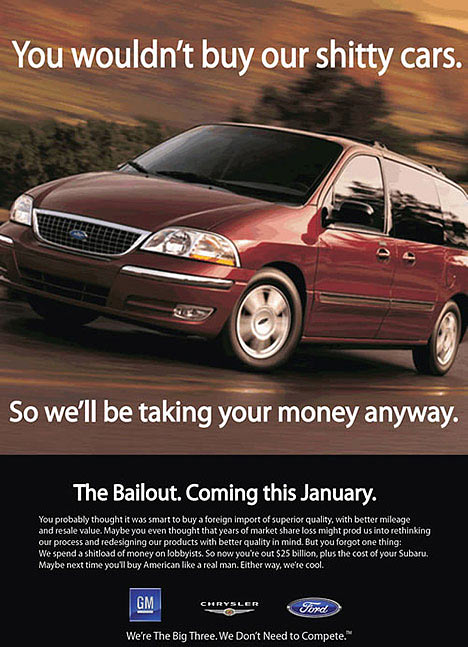
The scary part is seeing how bad most GM cars are, and seeing GM try to get the same protection as Trabant had for the same reasons.
Want to know how bad GM cars have gotten?
We rented a big van on our last photo tour. I kid you not: the rear doors flipped open 1/2" (1cm) too far so that the front door scraped them if you tried to open both at the same time, as of course we always did. The rear door was loaded with what looked like serious door dings, but all caused by the front doors of the same van!
The scary part is that Chevrolet isn't just one guy making custom cars in his garage. GM is a big company, and a lot of people had to sign off on that defective design. It's not just one van; I mentioned this to a friend who works at a Mercedes dealer and he laughed, because their Chevrolet van, used for shuttling people around, did the same thing!
The fact that Chevrolet could do something that stupid shows us why GM went out of business. GM will send guys in private jets to DC to ask for our money that we don't want to give them since we're not buying their crummy cars, but GM won't bother to spend an extra 50¢ to fix the design of the doors of their vans and design them well enough, with decent interior material, so individuals might buy them. GM doesn't work because all it does is argue internally; management vs. workers, instead of getting the job done. Companies that win have people who want to work there, and they all pull in the same direction, not against each other.
In America, if you can't compete, you're out. That's what keeps us strong. If you want to make stuff that sucks and think people will buy it simply because it says "Made in USA," guess again. It's unpatriotic to buy anything except what you really want.
Every time I got laid off from some business that was sucking, it forced me to make hard decisions and get back to work at a company that did do something worthwhile.
The free market has been tough on me, and it's tough on everyone. That's what keeps America on top.
Every time I've been unemployed, I thought I was going to die. That's why I worked 14 hours a day finding my next job. These were the toughest times in my life, but if I thought I could sit around watching cartoons all day and still do OK, you'd better believe I'd still be sitting around and watching cartoons!
It's much harder living in a free country, but when you have to pull your own weight, we all pull harder, and everyone benefits.
The funny thing about these truths is that the people who disagree the most are professors and academics, who are the cause of all this. (Karl Marx was an unemployed newspaper editor and amateur writer and philosopher; he never had a real job.)
Intellectuals will go on for hours about how any of these failed Socialist and Communist countries weren't really Communist or Socialist or whatever, and that's the problem: academics have the intellectual capacity to understand Communism and Socialism's heady concepts, but these intellectual exercises have failed miserably in the catastrophic realities we have already seen.
We've seen in the real-world failure of the USSR. In practice with real people, Socialism just doesn't (and didn't) work.
Maybe academic Socialism or Communism works on paper, but the world has spoken: it doesn't work in practice since people, not intellectuals, run the country and do the work. If you visited these countries yourself in their day (as I have), you'd have seen 500 bottles of canned beets and nothing else on store shelves. Why? Because factory production was dictated by benevolent government planning, not the free market.
The USSR went completely bust after 70 years. Free economies, like the USA, have been running strong for hundreds of years. Marx was wrong and the people are right. Yay! Lab over.
God bless America. God bless freedom.
15 May 2009, Friday
Dagnabit!
I just finished reading the IIIf manual and figured out how to load it, and got some film out of the fridge all excited about firing it up.
Then the bell rang, and my Nikon 10-24mm DX just arrived. I'd better get back to work.
It's made in China, it seems really nice, and Nikon is so adamant about quality that even the plastic bag has the same serial number as the lens. Collectors beware: you now need numbers matching on the lens, box, and plastic bag!
It covers FX out to 15mm, and 4:5 out to about 13mm.
its almost exactly the same size and weight as the 12-24mm. Unlike the 12-24mm, its a dirt pump: the front moves in and out as you zoom, while the 12-24mm doesn't move.
The 10-24mm focuses way too close for comfort, about half a foot (24cm). Sandpaper grips on cap??
More on Monday. It's 5PM and I'm going home.
Utility
I just had a reader send me a 1952 Leica IIIf.
The index page of the thin instruction manual shows a blindfolded guy holding a camera and says: "After reading these instructions, practice until you can operate your LEICA in the dark."
This is what a camera should be. If you have to look at the camera to operate it, how can you see your subject? We have come so far away from photography today.
The manual also proudly points out that the illustrations were all shot with the same camera described in the manual, the IIIf, and a 135mm lens on a bellows.
Galen Rowell once observed that photos rarely show anything clearly. They do not represent reality. Galen pointed out that if they did, camera instruction books would use photos instead of line drawings to show how to use the cameras! Look at your Nikon or Canon manual: it's all line drawings, not photos of the camera. Galen is right!
Nikon's press publicity photos of the D3 and D3X were shot on a Phase one P45, for instance, not a Nikon.
Practical Update
I just simplified How to Select the Sharpest Aperture so it makes sense to everyone. Enjoy! I should have done this ten years ago when I first published it.
Leica 35mm f/2.8 SUMMARON.
NEW: Leica 35mm f/2.8 SUMMARON Review.
If you're a Leica guy, this is another immortal instrument for immortal men. It's a really good lens at a bargain price, as Leica goes.
If you're not a Leica shooter, it's a $400 lens that does about the same thing as an the lens on a point-and-shoot, as I've bought in thrift stores for $3.50.
In any case, I've written more about this lens than anyone is ever likely to want to know.
Sorry, My D5000 and 10-24mm isn't here yet, so look for a review of the Zeiss Ikon soon.
Pogue Speaks the Truth
Today David Pogue put everything you need to know about buying a camera into about two sentences. In this case, he's as brilliant a writer as Vonnegut.
As Pogue, a do-it-all tech gear writer for the NY Times, brilliantly points out, the only thing that matters about the tech quality of a image from a digital camera is the size of the sensor, not the number of pixels. All more pixels do is screw up the image, but the bigger the sensor, the cleaner the image.
Pogue then explains why laypeople are lead to care about pixels: because it's trivial to add more pixels (all you do is split up the chip into more pieces), but to add a bigger sensor costs a lot more money to make.
Bravo David!
14 May 2009, Thursday
NEW: 645-format 35mm Lens Equivalent Focal Length Chart.
Voigtlander 15mm M II (larger than life).
NEW: Voigtlander 15mm M II Review. Magnificent!
This tiny, inexpensive lens is extraordinarily good. It's got the same fantastic optics as the old 15mm lens, and adds coupled rangefinder focusing, and a 52mm filter thread!
News: For you hackers, DxOMark's camera tests, the only genuinely scientific tests published today, just ranked the Phase One P65+ medium format back as the best on the planet.
DxOMark also just posted results for the Hasselblad H3DII 50.
Nissan.com: Check it out: my wife called me when a co-worker's crappy rented Nissan Altima hybrid wouldn't start.
With the wife on the phone, I looked for contact info for Nissan cars, and it turns out that Nissan.com is another guy's computer company that's been around longer than Nissan cars ever knew about the Internet. Ha!
The sad part is it looks like Mr. Nissan, the computer guy, claims that Nissan cars is harrassing him about it. I don't know anything about it, but it's interesting. Maybe some of you folks know more about it than I do.
The Japanese were late adopters of the Internet; I remember back when I had a job and we snickered for quite a while as a Japanese competitor of ours took years to figure out that it needed a website.
13 May 2009, Wednesday
Nikon DSLRs and the D40
In case I don't say it often enough, the Nikon D40 is still Nikon's best digital camera. It's Nikon's only current camera with a professional 1/500 sync speed, needed for daylight use with flash.
Why would I want to lug my D3 around when the D40 goes farther and gives me the same results?
Forget the D60 - it's the same as the D40 with a slower sync speed, for more money.
The D90 is sweet. It could replace my D40 and D3, but since I already have a D3 for studio work (it sits on a stand so I don't have to move it more than a foot), the D40 is all I want in the field.
Let me repeat: I own a D3. I could use it for my pictures of family and friends, but I don't want to carry it. I prefer my D40 and 35mm f/1.8 lens.
My D40 is missing nothing I find important to making good pictures. My D40 has everything I need, and then some.
Forget the D300. It's the same as the D90, but weighs and costs more.
The D700 is wonderful. If I didn't mind the weight and its lack of the 4:5 pro format, the D700 is the way to go for serious field photography, especially for the reasonable price for what you get. (Ditto for the Canon 5D Mk II.)
The D3 is for full-time news and sports pros, which I'm not. I just happened to buy one when there was no D700, and I still love the D3's 4:5 crop mode which I call up without taking my eye from the finder for vertical shots.
You already know my stance on the D3X. The D3X is the best camera out there if you don't mind the weight, even for high ISOs, but not for $6,000 or whatever they go for today. The boycott stands as strong as ever.
What about the D5000? Mine is still on order. I'll let you know when I get it.
Nikon Lenses
What about Nikon's new 10-24mm? Likewise, mine is on order and I'll let you know when I get it. I suspect it will be the new king of DX wide zooms, replacing the 12-24mm, but we'll see.
Every DX shooter needs a 35mm f/1.8. For only $200, it's a tough, sharp, fast lens I take everywhere on my D40. Look at my shots of my boy and my girl; it's all I need, and it's spectacular in low light. Zooms are for disabled people; if you're mobile, you don't need a zoom. The 18-55mm kit lens is wonderful, but its not as tough as the 35/1.8, and not good for low-light.
If you're shooting DX like the D40, the kit lens or the 35/1.8 is are all you need, period. If you want to go longer, the 55-200 VR or bigger FX 70-300mm VR are the best.
If you want my dream setup for the D40, you already get the best possible lens for free when you buy a D40: the 18-55mm. Go get a 35/1.8 for low light without flash, and if you really want to carry too much stuff with you, get the 10-24 and 55-200 VR. Do not carry the 18-55 at the same time as either the 10-24 or 35/1.8; never carry lenses that duplicate each other's functions.
Sure, camera stores try to sell you more than you need, just like most salespeople. Buy all this stuff, and if you try to carry it at the same time, you'll be so bogged down you'll make no shots.
The older and more experienced I get, the less and less and less I carry. Today it's a D40 and 35/1.8, the SB-400 flash, and that's it.
I've already covered what you need for FX.
Why not a Leica M8?
Simple: If I want the convenience of digital, I want autofocus like on my D40, and if I want careful quality, I demand full-frame Real Raw, not the half-frame sensor of the M8. I don't have $6,000 to throw away on tomorrow's cast-offs.
I shoot film in my Leicas, and have it scanned as it's developed for higher-resolution files than the M8 can make. Does Salgado, one of the greatest photographers of all time, and the greatest living photographer shooting Leica (that I know about, anyway), shoot an M8? No! Salgado shoots Tri-X. As Salgado shared in a recent interview in Outdoor Photographer, there is no digital camera which allows him to get the look he demands.
I'm cheap. The M8 will be worth nothing as soon as a real full-frame digital M comes out. I learned my lesson with Nikon and the D1X and D2X: half-frame DX relics have no resale value, even at garage sales. Because of digital rot, buy a digital camera to shoot, but don't expect to get any money out of it when you're done with it.
Buy any old or new film Leica, send your film to NCPS for instant scanning as I do, and use it until an M9 arrives. You'll be able to sell your old film Leica for a great price to finance an M9 tomorrow. If you have less than the Leica Man's cash, if you buy an M8 today, you'll be dead in the water tomorrow because your money will be gone. A used M7 is only about $2,000, and I only shoot about $1,000 worth of film and processing each year. In a few years, a used M7 should still be worth the same $2,000 you paid for it.
Bet your farm on lenses. Lenses always hold their value, and usually go up. I pity the man who buys an M8 and then cheaps-out on lenses. Look at Leica's 135mm lenses, which are worth nothing today because they don't work on the M8. I paid about $100 for mine; buy enough Leica 135s and you can retire on the resale, if Leica ever makes a full-frame M camera.
One of these days I will try an M8 and I might get hooked (any M8 is still far less expensive than a D3X), but for today, it's film and my D40, baby. I shoot Leica because I'm thrifty: film Leicas cost far less to own and shoot than digital SLRs.
12 May 2009, Tuesday
Great Modern Hoax
I'm always amused when people believe anything they read, especially over the Internet.
My brother the university professor sees the same thing every day. When he sees the same error pop up simultaneously in several papers, it almost always leads back to Wikipedia.
Wikipedia tries to ignore the fact that people are always adding and deleting little spoofs all the time. In fact, articles about me come and go from Wikipedia just about daily, too.
The Future of Digital Cameras
The Japanese meet a couple of times a year to discuss which companies will go into what markets with what products and features. This helps them avoid needless competition and to focus on their individual strengths so they all benefit.
This is why both Canon and Nikon DSLRs magically added video within about a week of each other, even though this takes years to develop. It's not chance, it's planned. It's OK in Japan, even though in the USA this is prohibited by anti-trust laws.
Anyway, the latest inventions I suggest to our pals in Japan are these Wi-Fi features for digital cameras. All these features are enabled when your camera is within sniffing distance of any Wi-Fi connection, just as I get on anywhere for free with my iPod Touch. You'll never have to pay a phone company to screw you with monthly and minute-by-minute charges for slow service when Wi-Fi is free and fast.
Interconnectivity: You'll be able to beam shots back and forth to your friends, whether they are next to you, or across the world.
On a photo outing, long gone is the need to bring a laptop computer. You can show your stuff to each other as you shoot it, or later at dinner.
Web Sharing: From your camera, you'll be able to pick out which images you want to share, and those are uploaded and formatted automatically to your online galleries visible to the entire internet.
Printing: You'll be able to order prints online directly from your camera from your favorite lab. This means that I'll have big, beautiful prints waiting for me either at any Price Club or in my mailbox at home when I return.
Everything will be done from the glass touch screen on the back of the camera, just as it's done today on every iPhone and iPod Touch.
If Apple has a hand in this, everything will just work, and everyone will be able to figure it out instantly. (Side note: for those of you who appreciate how brilliantly your iPhones just work compared to your Windows computers, try an Apple computer. They work even better than your iPhone!)
The days of needing a laptop computer in the field, or paying for connection fees, will be as laughable tomorrow as film cameras are today to most people.
Long gone also will be the distinction between devices. You'll be able to do all this just as easily from your camera as your phone as your computer. They will all become the same thing.
Heck, duct-tape an iPod Touch to the back of your camera and you have a better screen, as well as the Internet in the palm of your hands.
For serious photographers, you'll have telephone and Internet functions added to your camera, while mom will have free internet and cameras added to her phone. The Japanese will have Internet phones that let us all say sayonara! to the un-American slime who have run American phone companies into the toilet, driven only by increasing ARPU (average revenue per user), not by increasing utility, by doing things like retaining those stupid "Press 2 to save your message, 3 to forward, or 4 for more options" messages we all hear when leaving anyone a message on their cell phones. No one ever uses those (they don't even work); that lady's voice is there to waste 20 seconds of your time so the telco can run you into an extra minute of charges 33% of the time.
Clever people already add microphones to their iPod Touches for free calling with Skype; tomorrow the Japanese will get on with integrated solutions which don't require being a hacker to figure out.
You saw this here first. Let's see how long it takes Japan to put this into practice.
[invention disclosure 12 May 2009, 11:25AM PDT]
Free Power
Go talk with your neighborhood physicist. It turns out that people are working on Muon-catalyzed fusion, and seeing weird results which not uncommonly yield more heat out than goes in.
These experiments use seawater to provide deuterium which is compressed into palladium electrodes. What's weird is that these experiments yield wildly different results each time, and no one has figured out yet what's causing what to happen. That's why this is on the cusp of science: scientists are still trying to explain it all.
Fleischmann and Pons scared everyone away by calling this Cold Fusion some time back, but real researchers continuing to look into it are coming up with some interesting, albeit varying, results.
NEW: Comparison of 21mm Rangefinder Lenses.
Zeiss 18mm f/4.
NEW: Zeiss 18mm f/4 ZM Review. Probably the world's best 18mm lens for your Leica.
Updates: I just added a link to www.antiquecameras.net from my Links page. They have info on just about every old camera worth shooting. It's where I go to try to figure out what some of the old Leica stuff is worth.
11 May 2009, Monday
Gracious me: Check out Cokin's filter adapter for the Nikon 14-24mm.
Sadly, even for $625, it doesn't work. The description clearly says it won't work at wider than 18mm before it vignettes, so who cares?
I use Nikon's smaller dedicated 14mm f/2.8 when I need to use filters (all be they gels) that wide.
If you do use this Cokin get-up on your 14-24mm, be careful that you don't get bright areas behind your camera reflected back in to your picture from off the filter.
08 May 2009, Friday
Secret: Did you know that you can click any picture on my site to go someplace or to enlarge the photo?
On this page, forget clicking the text links, click the photos to get to the reviews.
Service: I just got my Minolta CLE back from OC Camera, a great dealer of great used equipment in Southern California. WOW!! Their service guy Gus did a great job of adjusting my CLE's rangefinder. I dropped off a 1956 Kodak Retina IIIc for him to work on next, no problem.
While other repair places are too scared to work on delicate old gear, Gus at OC Camera seems to relish it. Thanks Gus!
Minolta CLE and Leica 40mm f/2.
NEW: Leitz Minolta CLE Review. Photography's messiah?
07 May 2009, Thursday
NEW: Leica 90mm Lenses Compared
Leica 90mm f/2.5 Summarit-M.
NEW: Leica 90mm f/2.5 Summarit-M Review
Leica 90mm f/2.8 Elmarit-M.
NEW: Leica 90mm f/2.8 Elmarit-M Review
Conclusion: Don't buy the new $1,600 Summarit-M f/2.5; buy a superior used Elmarit-M f/2.8 for a fraction of the price.
04 May 2009, Monday
NEWS: Canon unleashed a slew of new rebates, effective today thorough 11 July 2009.
As usual with Canon, but not with other brands, the rebates are instant discounts. "Instant" means you get the lower price as you by the items. You never have to cut up your boxes, copy your receipts or mail anything, ever.
Here's the list of all the current Canon rebates along with their final selling prices.
Contrast this to Leica, from whom I finally got my $300 rebate check for the 28mm f/2.8 lens I bought last year. It only took a mere three months to get my check after mailing in my box tops.
01 May 2009, Friday
Nikon D90.
NEW: Nikon D90 User's Guide in PDF.
You asked, so I had it professionally converted so it looks awesome. Thanks Kirk!!!!!
Read it online all you want for free, but since I had to pay for this, I need to ask you for $5 for any copy you print or save.
Thanks, and thanks for asking! If everyone chips in (no cheating), I'll be able to keep offering these without any of the hassles of the folks who try to have you pay-before-play, or ask $29.95 for the same thing.
Enjoy!
I'm thinking y'all are going to want a guide to the Nikon D5000 next. I haven't heard much of an uprising for a Canon 5D Mk II guide. Want to know the coolest trick with the 5D II? Someplace in the custom menus you can set something like an "info screen" to ON, and then all you do is tap the SET button, and every setting pops up on the big rear LCD! Use the thumb button to navigate to what you want to set, (which is pretty much anything and everything), spin the knob, and you're done! That trick, and the Canon 30D guide (also in PDF) will give you 99% of what there's to know about the 5D Mark II.
Canon 35-70mm f/4 FD.
NEW: Canon FD 35-70mm f/4 Review.
When my dog dragged this terd in from my backyard I was going to toss it, but for laughs I shot it, and it's really good!
What Was New in:
The end of September, 2008 (Photokina)
The beginning of September, 2008
December 2007: Loads of details about the Nikon D3, D300, 14-24mm and 24-70mm, much of which still isn't on the individual review pages.
November 2007: First hands-on details about the Nikon D3, D300, 14-24mm and 24-70mm, much of which still isn't on the individual review pages.
August 2007 (Loads of new Nikons and Canons)
2006 November - December (includes birth of Ryan Rockwell)
2006 October - November (includes photos from a trip to NY)
Home Donate New Search Gallery How-To Books Links Workshops About Contact




